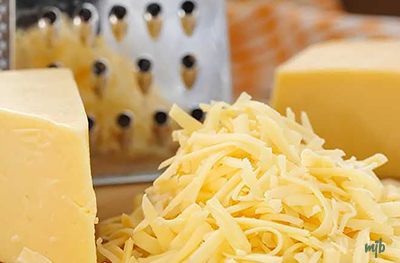
Saturday, 18 January 2025
The History of Pizza Cheese
The History of Pizza Cheese
Pizza cheese, one of the most popular and widely used types of cheese globally, has secured a special place in the food industry as a key element in pizza preparation. With its stretchy texture and delightful taste, this cheese not only provides a unique culinary experience for consumers but has also become a symbol of fast food. From the early days of pizza's introduction to people's tables to its global expansion, pizza cheese has played an irreplaceable role in shaping the appeal of this dish. In this article, we aim to examine the role of this essential ingredient in the transformation of one of the largest food industries in the world by taking a closer look at the history of pizza cheese, the technological advancements in its production, and its impact on the development of the fast food industry.
The importance of pizza cheese goes beyond its flavor and taste. Its ability to melt evenly and its stretchiness have not only improved the quality of pizza but also set new standards in the production and delivery of fast food. Today, the fast food industry is unimaginable without the use of pizza cheese, which has become a determining factor in the success of many fast food brands.

The History of Pizza Cheese: From Origin to Evolution
Cheese in Ancient Civilizations
The use of cheese in cooking dates back to ancient times. Historical evidence suggests that the ancient Egyptians were the first to produce cheese on an industrial scale. In both ancient Greece and Rome, cheese was an integral part of the diet and was used as an important source of protein in foods. Various types of soft and hard cheeses were consumed during this period, but none of these cheeses had characteristics similar to the ones used in pizza today. At that time, cheeses were primarily produced naturally and traditionally and had various uses in different culinary preparations.
The Introduction of Cheese to Pizza
Pizza, as a distinct dish, originated in Italy and initially consisted of a simple flatbread with various toppings. The first use of cheese on pizza dates back to the 16th century, particularly in Naples, Italy. At that time, local soft cheeses such as "fiore" cheese or "white cheese" were used as toppings for pizza. Over time, the type and quantity of cheese on pizza underwent significant changes. These changes, influenced by cultural and economic transformations, particularly in the 20th century, led to the pizza we recognize today, with the use of special and unique cheeses such as mozzarella.
Mozzarella Cheese: A Star in the World of Pizza
Mozzarella cheese, originally made from cow or buffalo milk, is known as the primary cheese used for pizza. Its unique characteristics, such as its soft and stretchy texture, made it the top choice for pizza. In addition to its pleasant flavor, mozzarella has excellent melting capabilities and remarkable stretchiness, making it ideal for use in pizza. From the 1950s onward, mozzarella began to be used more widely in Italian pizzas and subsequently across the world, rapidly gaining popularity. The popularity of this cheese in pizza can be attributed to its distinct flavor, stretchy texture, and attractive appearance, which together turn the experience of eating pizza into both a visual and gustatory delight.
The Development of Specialty Pizza Cheeses
In recent decades, with the growing demand for pizza and the need for mass production of this dish, the production of processed cheeses specifically designed for pizza has flourished. These cheeses are specifically formulated for use in pizza and differ from natural cheeses. Pizza cheeses are typically made from a combination of cow's milk, various additives, and preservatives to improve melting capabilities and extend shelf life. These cheeses are usually produced industrially and are available in sliced or shredded forms for consumers. The main difference between these cheeses and natural cheeses lies in the processing methods and the additives used, which give them better melting properties and greater resistance to heat, especially for pizzas baked at high temperatures.
The mass production of these cheeses has led to significant changes in the fast food industry, contributing to the global expansion of pizza as a fast and delicious food option. 
The History of Pizza Cheese in the Fast-Food Industry
Pizza Cheese and the Fast-Food Revolution
Pizza cheese, as one of the essential elements of pizza, has played a prominent role in the world of fast food. With the increasing pace of urban life and changes in dietary habits, pizza emerged as a quick and delicious meal, becoming one of the most popular options on fast-food restaurant menus. This transformation brought about a significant revolution in the food industry, with pizza cheese playing a fundamental role in it. With its unique features, including its delicious taste, excellent stretchability, and proper melting, pizza cheese contributed to the growing popularity of pizza and set new standards for global fast food. One of the key changes in this process was the standardization of pizza cheese for mass production, which enabled pizza to be produced on a larger scale.
Variety of Pizza Cheese in Fast Food
The fast-food industry, recognizing the wide variety of customers and tastes, has introduced different types of pizza cheese to meet consumer needs. Mozzarella, cheddar, parmesan, and other processed and blended cheeses are used in fast-food pizzas to cater to different preferences. For instance, some fast-food restaurants have turned to cheeses with distinctive and diverse flavors such as cheddar and blue cheese to attract customers with new and unique tastes. This variety of cheese is particularly noticeable in custom pizzas and those specially created by fast-food chains tailored to local tastes in different regions.
Impact of Pizza Cheese on the Taste and Texture of Fast-Food Pizza
The type of cheese used in pizza greatly affects its taste, texture, and stretchability. Mozzarella, particularly in fast-food pizzas, with its high melting ability and unique stretchiness, is one of the main components of successful pizzas. The soft and creamy texture of mozzarella when melted on pizza creates a unique experience of enjoying the pizza. On the other hand, balancing the flavor of cheese with other ingredients such as sauce, proteins, and vegetables is of utmost importance. Using the right and high-quality cheese not only improves the overall taste of the pizza but also creates a desirable texture, which is visually and tastefully appealing to the customer.
Challenges in the Production and Use of Pizza Cheese in Fast Food
One of the major challenges in the fast-food industry is maintaining the quality of cheese under industrial conditions. Mass production of pizza cheese in factories requires specific processes to ensure that the quality of the cheese is preserved. The storage conditions, temperature, and appropriate timing for storing and distributing cheese in this industry are crucial. Additionally, reducing production costs without compromising quality is another significant challenge for cheese producers in the fast-food industry. The use of processed cheeses to reduce costs and increase the shelf life of cheese is one solution to address this challenge. Finally, adhering to health and safety standards in the production and use of pizza cheese is essential. These standards ensure that the cheese used in fast food meets the highest levels of quality and food safety.

The Future of Pizza Cheese in the Fast-Food Industry
New Trends in Pizza Cheese Production
With advancements in technology and changes in market demand, pizza cheese production has entered a new phase. The use of innovative technologies, such as smart and automated processes for controlling temperature and humidity during production, has significantly improved the quality of pizza cheese. These technologies enable the production of cheeses with specific characteristics that perform better not only in taste and texture but also in durability and melting capabilities. Additionally, the production of organic and natural cheeses, in response to the growing consumer demand for healthy food without chemical additives, is expanding. This trend is particularly important in developed countries and may, in the near future, see organic cheeses becoming a common choice in fast-food pizzas.
Pizza Cheese and Responding to Consumer Needs
Today, consumer preferences have become increasingly diverse. Therefore, one of the most important future trends in the fast-food industry is addressing these various tastes. The production of cheeses with special features, such as low-fat cheese, lactose-free cheese, and plant-based cheeses made from plant milks like almond or soy, is on the rise. These types of cheeses are especially appealing to individuals who follow specific dietary regimes or have issues like lactose intolerance. In this way, the fast-food industry is moving towards producing products based on special needs to attract a broader and more diverse customer base.
Pizza Cheese and Environmental Sustainability
One of the greatest challenges in the food industry is reducing environmental impacts, and pizza cheese production is no exception. In the future, we are likely to see more sustainable methods used in cheese production. This includes production techniques that consume less energy and the use of more sustainable raw materials. Furthermore, the use of biodegradable packaging for pizza cheese could be a significant step towards reducing plastic pollution and supporting environmental protection. Many cheese manufacturers are exploring recyclable packaging or packaging made from natural materials to contribute to environmental sustainability. These actions are not only essential for preserving the environment, but consumers are increasingly attentive to these issues and are more inclined to purchase from brands committed to social and environmental responsibility.
In summary, the future of pizza cheese in the fast-food industry is headed towards technological innovations, greater product diversity, and adherence to sustainability principles. These developments will not only enhance the consumer experience but also help preserve the environment and meet the diverse needs of society.

